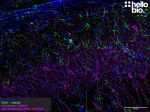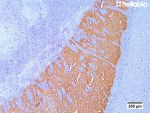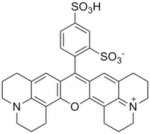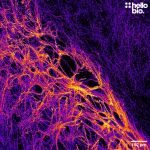Amyloid-β
Amyloid refers to abnormal fibrous and extracellular deposits found in various tissues. Amyloid fibers and oligomers are associated with Alzheimer’s disease and amyloid-β peptides (e.g. β-Amyloid Peptide (1-42)) are a predominant component of amyloid plaques. Methoxy-X04, Thioflavin T (ThT) and the next generation Thioflavin X (ThX) are used to stain amyloid. Researchers can make big savings on Amyloid-β related peptides and products, our prices are around 25-50% less than other suppliers.
Streptavidin Janelia Fluor® 646 (HB17045)
Description:Janelia Fluor® 646 conjugated streptavidin for detection and signal amplification of biotin coupled proteins and antibodies.
Streptavidin-HRP (HB5225)
Description:Biotin binding protein conjugated with HRP for colormetric detection in IHC and chemiluminescent detection in WB
Sulforhodamine 101 (SR101) (HB0838)
Description:Red fluorescent dye. Preferential astrocyte marker. Also labels oligodendrocytes.
Thioflavin S (ThioS) (HB5134)
Description:Fluorescent amyloid β dye, used to detect amyloid pathology.
Thioflavin X (ThX) (HB17774)
Description:Next generation, cell-permeable fluorescent amyloid stain with superior photophysical properties compared to Thioflavin T
- Description:
Mounting and storage solution for use with cleared tissue samples














